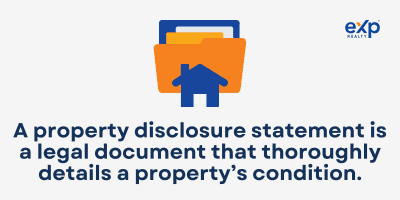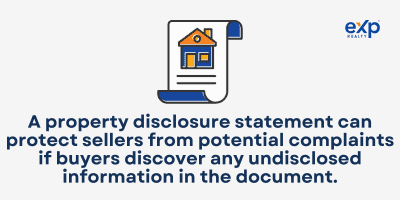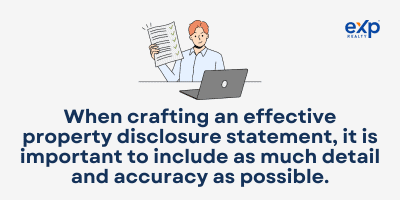In the past few years, about 5.64 million existing houses have been sold in the U.S., according to a report from the National Association of Realtors. The selling process has been efficient due to increased rules which minimize any potential issues. However, it is essential to purchase from a reliable local real estate agent who can easily get through the maze of paperwork of those essential documents such as property disclosure statements.
The property disclosure statement helps buyers to understand potential issues and defects with a home they’re considering buying. The statement legally obligates the seller to provide buyers with information about their properties. However, it is important to understand the different factors that need to be included in a property disclosure statement.
Keep reading to discover what is a property disclosure statement and why they are important when buying a new home.
What is a Property Disclosure?

A property disclosure statement is a legal document that thoroughly details a property’s condition. It includes any known issues or defects that the seller is aware of and must disclose to prospective buyers. The document is signed by the sellers and shared with potential buyers to help them make an informed decision about their purchase.
The property disclosure statement is divided into two sections. The first section is a general disclosure regarding the property itself, such as its condition and any known issues about it. The second section is a detailed disclosure of any specific issues that the seller is aware of. It can include anything from problems with the roof to potential safety hazards in the home.
The disclosure statement is important as it can allow buyers to see any potential issues with the property before they purchase. It can help them avoid issues down the road, where they may have to pay for costly repairs and or legal battles.
The property disclosure requirements vary by state. However, the document must include any physical defects in the walls and roof, major appliances that are included in the sale, plumbing and electrical systems, Heating, Ventilation and Air Conditioning (HVAC) system, any known pests on the property, home warranty information and more.
It is important to note that the property disclosure statement is not a guarantee of the condition of the property. The seller is not obligated to provide a detailed inspection of the property. It is up to the buyer to hire an inspector to uncover any hidden issues with the property.
If your seller does not provide a property disclosure statement, it is important to ask for one. For instance, the Ohio Department of Commerce – Residential Property Disclosure Form- provides buyers with a standard document to help them understand the condition of their property.
In some cases, the seller may be exempt from providing a disclosure statement due to their state laws.
The Importance of Accurate Property Disclosure Statement
When writing a property disclosure statement, it is important for the seller to be completely honest. They should include any and all known issues with the property and not leave anything out. It can protect them from potential complaints if buyers discover any undisclosed information in the document.
Here is a comprehensive analysis of the importance of an accurate property disclosure statement:
Helps Make Informed Decisions
The property disclosure statement can guide the buyer on whether to purchase the property or not. It can provide an in-depth look at the condition of the property and help buyers understand what they’re getting into. It can also help buyers make an informed decision on whether to purchase the property or negotiate a better price.
Protects Buyers from Liabilities
The property disclosure statement can help prospective buyers from any potential liabilities such as unknown issues with the property or unexpected repairs. It can provide an accurate overview of the property and any associated issues or defects.
If the seller fails to accurately disclose any issues with the property, then they can be held liable for any costs associated with those issues. The buyer can have a legal right to rescind the purchase agreement if they can prove that the seller misrepresented any information in the disclosure statement.
Gives the Seller Peace of Mind
The statement can give sellers peace of mind that they are accurately disclosing any known issues with the property. It can help them avoid legal troubles down the road if buyers discover any misrepresentation in the disclosure statement. It can also save them from costly repairs that may arise from any undisclosed issues with the property.
Maintain the Property Value
Prospective buyers can be willing to pay more for a property if they are aware of any potential repairs or issues upfront rather than having to pay for additional repairs after purchase.
The statement can also help buyers accurately estimate the property value. They can factor in any potential repairs or issues and come up with a reasonable offer price for the property.
Saves Money
By taking the time to read through the document, buyers can get a better understanding of the property. It can help them avoid unexpected costs that can drain their finances. They can also save money by avoiding costly legal battles due to misrepresentations in the disclosure statement.
Transparency
The property disclosure statement can provide transparency between the buyer and seller. It ensures both parties are aware of the property issues before purchase and can help them come to an agreement on the purchase price.
It can also help build trust between the buyer and seller as they can have confidence that the other party is being honest with them.
How to Craft an Effective Property Disclosure Statement

When crafting an effective property disclosure statement, it is important to include as much detail and accuracy as possible. You can even include photos or videos of any issues with the property to give buyers a better understanding of the condition. It is also important to be honest about any issues or defects, rather than trying to hide or downplay anything.
Here is an elaborate analysis of how to craft an effective property disclosure statement:
Include a Comprehensive Overview
The document should picture the ideal real estate portfolio. It can include an overview of the property, such as its location, size, lot information, and the age of the buildings. It should also include any upgrades or renovations that have been done recently.
You can also include information on any current and previous tenants in case the buyer wants to do a background check. However, you should avoid disclosing any personal information such as names, addresses, or phone numbers as you can be liable for privacy rights complaints. Get in touch with your real estate attorney during this process so you can avoid any mishaps.
Be as Specific as Possible
When disclosing any information about the property, it is important to be as specific as possible about any foundational or material defect. For example, rather than simply stating, “there are leaks in the roof”, you can provide details on where specifically the leaks are located, how severe they are, and how long they have been leaking. You can write the statement as “there is an active leak in the northeast corner of the roof that has been leaking for two years.”
It can help give buyers a better understanding of the property’s condition and can also help save them from unexpected repair costs. It can also minimize legal risks if buyers decide to take legal action against you for misrepresentation in the disclosure statement.
Include Property Inspections
If the property has gone through any inspections, it is essential to include the results in the document. It can help buyers get a better understanding of any potential issues that may arise with the property and can also help them make an informed decision.
You can also include a list of any repairs that were done recently, such as painting, plumbing, or electrical work. It can give buyers an understanding of the condition of the property and can help them avoid unexpected costs.
Be Clear About Liability
The disclosure document should include any information about potential liabilities that may come with the property. It can consist of any potential legal risks, such as if the property is located in a flood zone or is subject to zoning laws. It can help buyers understand what they may be responsible for if any legal issues arise.
Provide Contact Information
It is important to provide contact information to help the buyer with any enquiries. By having this contact information readily available, buyers can be more confident in their purchase and have someone to turn to if any issues arise.
The buyer can trust that you take full ownership of the property and its condition. They can also contact you to clarify any issues they don’t understand in the disclosure agreement.
Proofread and Finalize
It is important to proofread the document before submitting it. It can help ensure all information is accurate and that the document follows all laws and regulations. It can also help you identify any potential issues or discrepancies in the document before it is submitted to the buyer.
Once the disclosure documents are finalized, you can submit them to the buyer for review and approval. However, it is important to note the document should be reviewed and approved by both parties before any agreement is made.
Key Takeaways
A property disclosure statement is an essential document that should be included in any real estate transaction. It can provide an accurate picture of the property and its condition and any potential liabilities that may come along with it.
It can also help protect the buyer and seller from legal action. It is essential to consider professional advice from a real estate agent or a real estate attorney when writing a disclosure statement.
For assistance in further understanding what a property disclosure is, contact a local real estate agent – eXprealty agents. After signing up, you can search for properties or get new alerts of new properties, houses or condo listings when they come on the market.
FAQs
Understanding the rules and regulations of real estate transactions can be confusing. Here are some frequently asked questions that may help you better understand what a property disclosure statement is:
What is the purpose of disclosures?
The purpose of disclosures is to provide an accurate representation of the property and its condition. It can also help protect both the buyer and seller from any legal action by providing all relevant information and details about the property.
What is the most common disclosure in residential real estate?
The top 3 most common disclosures in a property disclosure statement are a death in the household, neighborhood issues, and flooding/plumbing leaks. A majority of seller disclosures include material defects, but in rare cases, may include foundational issues as well.
Why is a property disclosure statement important?
A disclosure statement is important because it can give the buyer a clear understanding of the condition of the property and any potential liabilities that may come along with it. It can also help protect both parties from any legal disputes that may arise.
What is the golden rule of disclosure?
The golden rule of disclosure laws is to provide an accurate and honest description of the property and its condition. All information provided should be up-to-date and relevant to the sale.
What are the disclosures one needs to make when selling a house, other than any structural issues with the dwelling?
When selling a house, sellers should disclose any information about the property that may affect the property’s value or its desirability. It can include information such as any environmental hazards, the age of the roof, water damage or any mold issues. In some jurisdictions, sellers are obligated to disclose any known material defects in the home.
What types of things should a home seller be careful about disclosing on his property disclosure form?
It is important for a property owner to be careful about disclosing any information that may be deemed fraudulent or inaccurate. It is also important to limit the use of a real estate broker as they can increase the chances of property line disputes.





